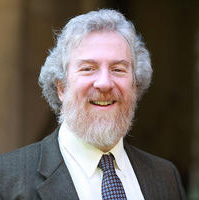For the Sake of my Brothers, Sisters, and Friends

The siddur is full of selections and quotations, from the Bible, the Talmud, Midrash, and even the mystical Zohar. There is great fascination and reward to be found in “unpacking” the paragraphs and pages to which we return so often in the cycles of community (and private) worship.
Toward the end of the Shabbat Musaf service, we find a remarkable selection from the Talmud, opening with the words “Amar Rabbi Elazar amar Rabbi Hanina . . . ” (Siddur Sim Shalom for Shabbat, 182). The short passage is complex in structure, and is hard to translate into English because it rests upon interpreting Isaiah 54:13 using an arcane wordplay. However, there are many different approaches to understanding texts and the experience of prayer—and I invite a new approach to this Musaf passage and the way we experience it.
Let me first turn to the text itself. Shalom occurs six times in the passage, including the final word. Five of these instances occur in biblical proof texts (Isaiah and Psalms) that support or elaborate upon this opening assertion: “Talmidei chakhamim (Sages/scholars) increase shalom in the world.” This is a remarkable claim, because we know that the Talmud is full of debate and discussion. We must learn, then, that debate and disagreement are not incompatible with peace; the quotation from Psalm 122:6 is instructive no less in modernity than long ago. The Psalmist asks peace for “achai vere’ai” (my brothers and friends), and the text seems to suggest that if we see those with whom we might debate and disagree as brothers, sisters and friends, only then will our work, discussions, and debates increase peace in the world. It is not the issues themselves, but the relationships among the community members that are most critical.
Now let us look beyond the text. Too often in synagogues the “Amar Rabbi Elazar . . . ” passage is omitted for want of time at the end of a long service, and we lose a chance to engage not only with a text that yearns profoundly for peace, but also with an inspiring collection of music it has inspired. Some of the greatest hazzanim have interpreted this text, and in more modern times participatory melodies have been composed by Shlomo Carlebach and the group Safam, among many others. This moment in the service is an opportunity for our souls to be engaged by soaring melodies, and for hearts to be inspired as congregations sing together, “May God’s People be blessed with Peace” (Ps. 29:11).
The composition by Rabbi Shlomo Carlebach is performed here by his daughter, Neshama Carlebach, with Rev. Roger Hambrick and the choir of the Green Pastures Baptist Church.
Listen to students of JTS’s H. L. Miller Cantorial School and College of Jewish Music sing the setting by Hazzan Moshe Oysher.
The group Safam embraces a modern musical style that retains significant elements of traditional cantorial music in this arrangement.
As always, I am interested to hear comments and reflections on these thoughts about prayer and liturgy. You may reach me at sabarth@jtsa.edu.



